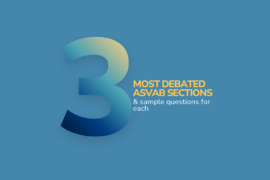As you apply to some colleges and universities, you may be required to take one or more SAT Subject Tests. Some of those institutions use your scores as they consider your application for admission, and others might use your scores to more accurately place you in your freshman classes. Be sure to check with each school to find out exactly which tests they require.
There are 20 SAT Subject Tests available today. The tests have been known by various names in the past (SAT 2, SAT II, SAT 2 test, and Achievement Tests) and those nicknames are still used at times. Today, each of the machine-scored standardized tests uses one hour to assess your knowledge of its subject matter and to find out how well you can apply that knowledge. All SAT Subject Test scores are reported on a 200–800 point scale.
Though some of the Subject Tests contain unique features or formats, they all consist of multiple-choice questions. If you are taking a SAT Subject Test with Listening, which are available for Chinese, French, German, Japanese, Korean, and Spanish, you must bring your own CD player and earphones on test day. Be sure to visit the College Board Web site so you can be certain your CD player meets the specifications listed there and will be acceptable for use. Language with Listening tests are administered only in November and only at selected test centers.
For SAT Subject Test study resources, visit Petersons.com/testprep/sat-ii.
So, what does each SAT Subject Test look like?
Biology E/M
There are two biology tests. Each test starts off with 60 general-knowledge biology questions on cellular and molecular biology, ecology, classical genetics, organismal biology, and evolution and diversity. Students who registered to take the Biology E test then have 20 additional questions on ecology. Biology M test takers have 20 additional questions on molecular biology.
Literature
There are about 60 questions on the literature test, based on six to eight passages. Split pretty evenly between the poetry and prose genres, about 30% of the exam is focused on literature of the Renaissance and seventeenth century; 30% covers literature of the eighteenth and nineteenth centuries; 40% is focused on works written after 1900.
Math Level 1
The Math Level 1 exam includes 50 questions. The test covers the following material: algebra, geometry (plane Euclidean, three-dimensional, and coordinate), trigonometry, statistics/probability, and miscellaneous topics (logic, elementary number theory, and arithmetic and geometric sequences). Approved scientific and graphing calculators can be used on the test, and it might be to your advantage to use one on up to half the items on the test. So be sure to check the calculator requirements on the College Board Web site and know how to use the calculator.
Math Level 2
There are 50 questions on the Math Level 2 exam. The test covers the following material: algebra, geometry (plane Euclidean, three-dimensional, and coordinate), trigonometry, functions, statistics (probability, permutations, and combinations), and miscellaneous topics (logic and proof, number theory, sequences, and limits). Approved scientific and graphing calculators can be used on the test, and it might be to your advantage to use one on up to half the items on the test. So be sure to check the calculator requirements on the College Board Web site and know how to use the calculator.
Physics
This test contains 75 questions on the following material: mechanics; heat, kinetic theory, and thermodynamics; waves; electricity and magnetism; modern physics; and miscellaneous topics (measurement, math, laboratory skills and the history of physics).
U.S. History
The U.S. history test contains between 90 and 95 questions. About 20% are based on history from pre-Columbian times through 1789 and 40% are from 1790 to 1898; the rest cover the period from 1899 through the present.
World History
This test contains 95 questions that cover world history from ancient times through the present. About 25% of the test is on world history through 500 C.E.; 20% covers the years 500 through 1500 C.E.; 25% covers 1500 through 1900 C.E.; and 20% is on history from post-1900 C.E. The last 10% is cross-chronological.
Chemistry
The chemistry test consists of 85 questions. To do well, you should be familiar with the structures of matter, states of matter, reaction types, stoichiometry, equilibrium and reaction rates, thermodynamics, descriptive chemistry, and general laboratory skills. The test will include about five items asking you to evaluate two related statements that are based on predicting chemical reactions and/or equation balancing. Your answers will be recorded on a special section of your answer sheet.
Chinese with Listening
The Chinese with Listening test contains 85 questions that measure your usage and reading and listening comprehension of Mandarin Chinese.
French
This test contains 85 questions that gauge your understanding of vocabulary in context, structure, and reading comprehension.
French with Listening
The French with Listening test includes about 20 minutes of listening questions and 40 minutes of reading comprehension questions. The listening section contains pictures, short dialogues, and long dialogues. The rest of the test covers vocabulary, structure, and reading comprehension.
German
This test contains 80 to 85 questions that measure reading ability only.
German with Listening
The German with Listening test features a 20-minute listening section, including long and short dialogues. There is also a 40-minute section that covers vocabulary in context, structure in context, and reading comprehension.
Modern Hebrew
This test contains 85 questions that measure your reading comprehension skills, ability to understand vocabulary in context, and knowledge of structure and context.
Italian
The Italian test consists of 80 to 85 questions. To do well, you must understand vocabulary in context, successfully answer fill-in-the-blank questions, and demonstrate good reading comprehension skills.
Japanese with Listening
This test includes 80 to 85 questions and covers listening comprehension, usage, and reading comprehension.
Korean with Listening
The Korean with Listening test features 80 to 85 questions and includes a 20-minute usage section and a 40-minute reading comprehension section.
Latin
This test contains 70 to 75 questions. About 65% of the test measures your translation ability, 5% covers derivatives, and roughly 30% covers grammar and syntax.
Spanish
The Spanish test consists of 85 questions. Test material equally covers vocabulary and structure, paragraph completion, and reading comprehension.
Spanish with Listening
This test features 85 questions, including a 20-minute listening section and a 40-minute reading section.
Whether you call them SAT 2, SAT II, SAT 2 Test, or SAT Subject Tests, be sure about this
As you head to the test center for your SAT Subject Tests, be absolutely certain you have several items with you: your admission ticket, a photo ID, two or more No. 2 pencils, and a soft eraser. If you are taking the Math Level 1 or Math Level 2 Subject Tests, an approved graphing or scientific calculator should be part of your equipment. If you will be experiencing a Subject Test with Listening, also carry along your headphones and CD player. In addition to packing these necessities in a simple bag or backpack, you might feel more comfortable if you wear your watch. And regardless of what you ate for breakfast, bring along a drink and/or snacks to help renew your energy levels during the breaks between tests.


